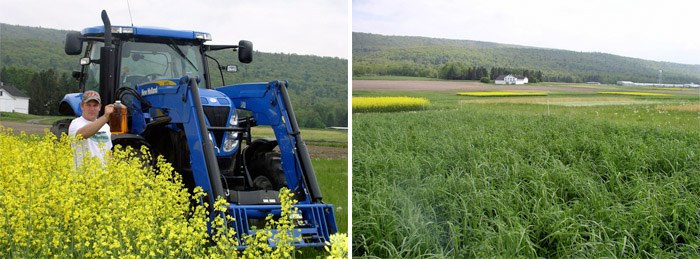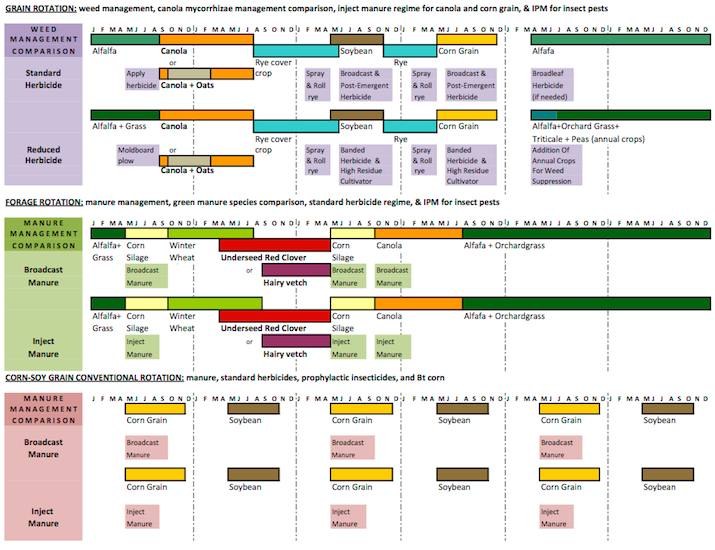Sustainable Dairy Cropping Systems Designed to Produce Forage, Feed and Fuel
We are an interdisciplinary team of Penn State and USDA-ARS researchers and educators who were awarded a 2009 NESARE USDA grant to evaluate cropping system strategies that can produce the forage, feed and fuel for an average-sized dairy farm in Pennsylvania.
Our sustainable cropping systems are designed to:
- minimize nutrient and soil loss, build organic matter and nutrient pools, and promote biological processes for nutrient aquisition
- enhance biological diversity and ecological interactions
- be energetically efficient, productive, profitable, and sustainable.

To produce the forage, feed and tractor fuel for an integrated 60 cow, 240 acre dairy farm, our team designed two diverse crop rotations. We did so in consultation with an Advisory panel to ensure that the cropping rotations are relevant to farmers and researchers.
Using farm-scale equipment and manure from a neighboring dairy, these cropping systems have been initiated at 1/20th scale on 12 acres of Penn State's Agronomy Research Farm at Rock Springs.
The sustainable cropping system strategies include two diverse, six-year rotations with legumes, cover crops, perennials, no-till, and manure injection. Canola will provide fuel for a Straight Vegetable Oil-powered tractor and meal for the dairy ration. Canola is integrated into both crop rotations to compare two rotation approaches for dairy farms. To reduce herbicide-use and herbicide resistance, the team is also evaluating a number of weed management practices including occasional tillage, a cover crop roller-crimper, a high-residue cultivator, and companion crops. Lastly, we included a corn-soy grain conventionally managed crop rotation for comparison purposes for research. This adds 2 more acres of crops to our site.
To evaluate the performance of the cropping system strategies, the project team members are monitoring performance indicators factors such as crop yield and quality; soil health; nutrient conservation; greenhouse gas emissions; weed, insect, and mycorrhizae populations; energy use and production; and farm profitability. A post-doctoral researcher, five graduate students, and other support staff assist with the intensive field data collection.
To conduct a complete nutrient balance, 12 large (90 x 50') field "lysimeter" areas were installed, where all inputs and outputs are measured, including water (rainfall, evapotranspiration, surface runoff, subsurface leaching). These lysimeters are used to quantify nutrient use efficiency of the forage component of the project and to determine the environmental trade-offs of new manure management approaches in comparison with conventional approaches. Through these lysimeters, improvements in the conservation of nitrogen, phosphorus and soil are being documented, as well as differences in atmospheric emissions (ammonia, greenhouse gases). Results will be used to adjust cropping system components as the project evolves and validate regional modeling efforts related to the Chesapeake Bay.
Finally, two dairy nutrition and production models will predict the performance of a virtual dairy herd from the crop yield and quality results. We are using FEAT (Farm Energy Analysis Tool) to estimate energy efficiency and greenhouse gas emissions of our cropping systems. Preliminary energetic efficiency analysis of the cropping systems indicate that the systems have the potential to produce all of the tractor fuel needed for the farm. Working with researchers from USDA-ARS Beltsville Agricultural Center and the Rodale Institute, we used FEAT to complete energetic and greenhouse gas analysis for their long-term farming systems trials.


